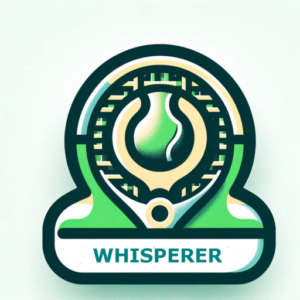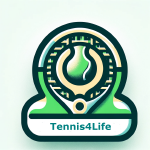Your Game’s Hidden Saboteur: Your Hips
Your Game’s Hidden Saboteur: Your Hips
We often think of tennis as a game of arms and shoulders. But in truth, your power, stability, and even precision begin at your hips. And if those hips are tight, weak, or misaligned, your game suffers long before the ball leaves your strings.
The Ball-and-Socket That Runs the Show
Your hip is a marvel of design—a ball-and-socket joint capable of moving your leg forward and back, side to side, and in rotation. In every sprint to a wide forehand, every serve, and every mid-rally recovery, your hips are working overtime to create and control motion. When they lose range or support, the body compensates—often with the lower back, knees, or even ankles picking up the slack. That’s when injury creeps in, and performance drops.
One of the most common culprits behind hip dysfunction? A modern lifestyle that keeps us sitting for hours. When you’re seated, your glutes are essentially “turned off,” forcing smaller muscles like the hip flexors and spinal stabilizers to overcompensate. After enough time, this leads to a body that’s trained to move poorly—and that’s not something a few quick stretches can fix.
Your Body Warns You—If You Listen
Your body has incredible resilience—it adapts, compensates, and keeps you moving through years of wear and tear. But when it breaks, it doesn’t whisper—it roars. Those tight hamstrings, that nagging lower back, the hip that feels stiff after long matches—they aren’t just nuisances. They’re warning signs. Subtle at first, they’re your body’s way of saying the system is under stress. Ignore them long enough, and what starts as stiffness becomes a full-blown breakdown. Mobility isn’t just about moving well—it’s your insurance against the game wearing you down before you’re ready to stop.
Why Tennis Demands More
Tennis is a unique movement cocktail. It asks you to be explosive and elastic at the same time. You’re lunging, twisting, accelerating, and recovering—all on a dime. Every shot you hit is a result of ground reaction force traveling through your body. If your hips aren’t mobile and strong enough to transfer that force, your timing is off, your balance suffers, and your footwork breaks down.
Mobility alone isn’t the answer. The secret lies in combining mobility with strength. It’s not just about how far your hip can move—it’s about whether the right muscles are moving it.
Build a Ritual
Begin with just five minutes at the start and end of your day. Move your hips in all directions. Do leg swings. Try seated internal and external rotations. Add hip CARs on all fours. These don’t just loosen tissue—they reprogram your brain to move better. And the more you repeat them, the more these movements become your new default.
You can even incorporate mobility into everyday life. Take stairs whenever possible—and not just up, but especially down. Walking down stairs demands controlled eccentric strength from your glutes and hamstrings while lengthening the hip flexors. It’s a deceptively simple way to reinforce neuromuscular coordination, proprioception, and joint range—exactly the qualities you need for explosive first steps and balanced shot recovery on court. Each descent becomes a micro-drill, tuning your hips to support rather than restrict your game.
But mobility without strength is incomplete. You need to build control. That’s where exercises like banded clamshells, side planks with hip lifts, and single-leg glute bridges come into play. These movements don’t just build muscle—they teach your hips how to fire in sync with the rest of your kinetic chain.
Over time, you’ll notice something shift. You’ll recover your split step faster. You’ll push into your first step more explosively. You’ll stay lower and more balanced through your groundstrokes. The footwork drills you’ve been grinding on—your transition steps, your crossovers—will begin to feel lighter and more natural. Because now, your foundation is working with you, not against you.
Pain Is a Signal
If you’re already dealing with hip discomfort, don’t freeze. Inactivity only creates more stiffness, and with it, more compensation. Even gentle movement can be healing—provided it’s deliberate, controlled, and supported by strength work.
And if you’re pain-free? That’s no reason to skip this work. Prevention is the most powerful play in your training arsenal. Think of hip mobility as your insurance policy—one that pays dividends in performance, longevity, and confidence.
Wrap
Tennis rewards the mobile, the strong, and the balanced. If you want to stay on court longer, stay injury free, and hit with more authority, take care of your hips.
Because the truth is, they’ve been taking care of you all along.
Reference: “Secrets of Giants: A Journey to Uncover the True Meaning of Strength.”




